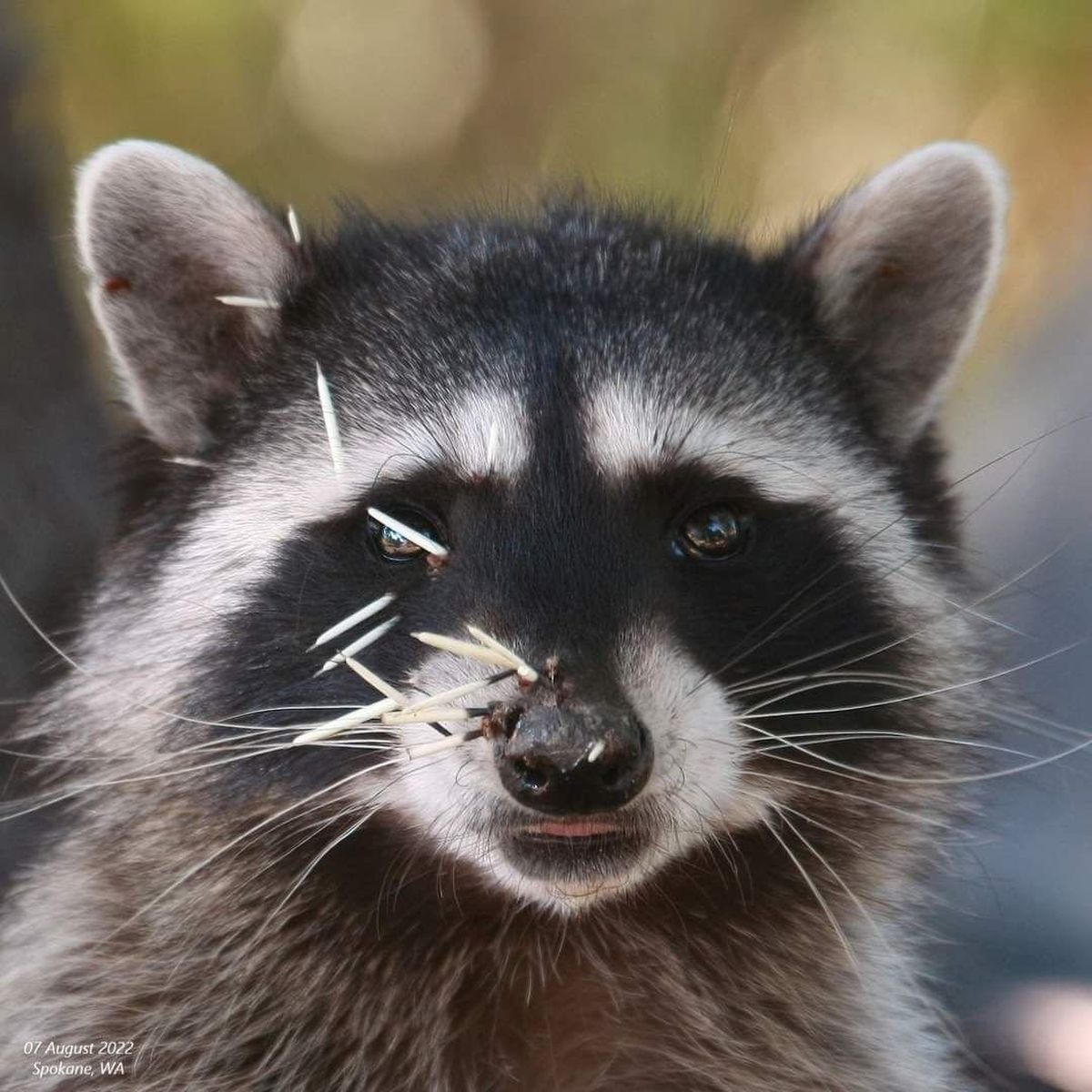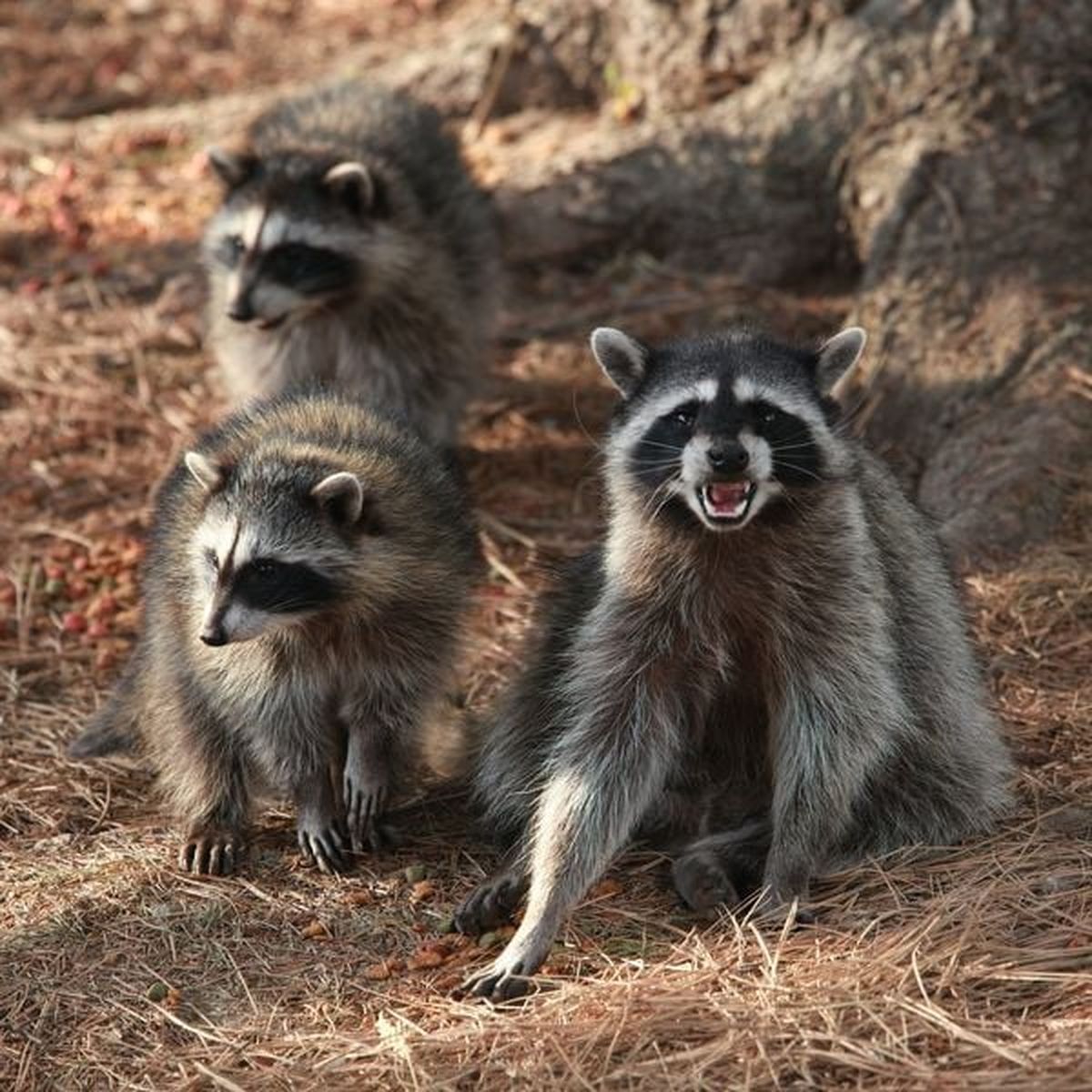Cool Critters: Raccoons unmasked – clever problem solvers with handlike paws
Several days after an encounter with a porcupine near the home of Carl and Shelby Barrentine of Spokane, a mother raccoon developed infections that required treatment. (Courtesy/Carl Barrentine)
It dons a black mask, scales gates, squeezes through open windows and is active mostly at night.
Put on your night vision goggles and say hello – not to a human intruder but to the common raccoon. Known as Procyon lotor by scientists and trash bandits by others, this mischievous animal is ever-present in urban landscapes, ranging from fields, parking lots and ball fields to backyards and rooftops.
And it is both adored and deplored by the humans they live alongside.
Once exclusively wild creatures, scientists theorize that raccoons are now more prevalent in urban areas than in rural locations, a shift that occurred over the past 70 years as urban areas expanded.
So whether your home is situated near forests or buildings, there’s a good chance a raccoon lives nearby. Or if you’re Carl and Shelby Barrentine, it could be multiple raccoons.
The couple’s home, located in a small residential area on the southern outer edge of Spokane, sits above a sloped forested area with a creek. This probably offers the best of both worlds to a raccoon: a natural habitat of trees, shrubs and water; and a large, foliage-filled backyard that caters to birds.
“We’re avid birdwatchers,” said Barrentine, a naturalist and retired biology professor, adding that each October, he and his wife deposit birdseed near the edge of their property for overwintering birds. After moving into their home seven years ago, they quickly learned that “local seed-eating mammals were ever eager to take advantage of a free meal, along with the local birds,” he said.
No matter. Because the couple embraces a ‘do no harm’ philosophy when co-existing with native wildlife, they continued to leave out the birdseed, thereby welcoming the masked diners.
Although often not visible to people, raccoons are a “major mammalian success story,” the National Wildlife Federation states on its website, adding that their nimble, almost handlike paws help them grasp food and lift trash can lids and container tops. Also helpful is their small body size (about 20-30 pounds) making it easy to navigate human landscapes, squeeze through tight spaces and shimmy up structures for access to food and shelter.
“Compared to other wildlife species living near humans, such as coyotes and deer, raccoons are in a league of their own,” the NWF states. “They have adapted to urban living in a way that makes them common in urban environments.”
Raccoons’ generalized diet – everything from berries, nuts, insects and vegetables to mice, pet food and discarded table scraps – has also enabled them to urbanize. So, too, has their cleverness.
Studies show they are keen problem solvers with good memories. In a recent study published in the journal Proceedings of the Royal Society B, free-ranging raccoons in Laramie, Wyo., were presented with multiple puzzle boxes containing various food rewards. Not only did they figure out how to open different types of latches to retrieve the food, but when an uninvited skunk began fiddling with a latch, a raccoon shoved it aside with its front paw. What’s more, some of the study’s raccoons managed to open latches while hanging upside down from the puzzle boxes if another raccoon stood in the way.
But regardless of how clever raccoons are, one thing they can’t finagle is a prickly porcupine. Two years ago this month, a mother raccoon with two kits appeared in the Barrentine’s yard with a half-face-full of quills. With abscesses oozing puss from the puncture sites, it became increasing hard for the mother to eat and care for her babies. Knowing she would likely die without treatment, the couple live-trapped her after scheduling an appointment with Washington State University’s Veterinary Teaching Hospital. Early the next morning, Carl drove the mother raccoon to Pullman where a licensed wildlife veterinarian anesthetized the animal and extracted the quills.
“We made a generous donation,” he recalled.
By late afternoon, the de-quilled raccoon was returned to the couple’s backyard where her two babies had been anxiously waiting on the limbs of a Colorado spruce tree.
For the animals and humans alike, “the mother and child reunion was truly a joyful occasion,” he said.

